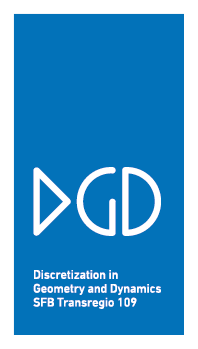Tropical Grassmannian TropGr(2,6)
Michael Joswig, Benjamin SchröterMedia
Description
The tropical Grassmannian TropGr\((d,n)\) is the tropicalization of the classical Grassmannian Gr\((d,n)\), defined over some field. It parameterizes the tropical \(d\)-planes in the tropical \((n{-}1)\)-torus; see Speyer and Sturmfels [1]. A closely related object is the Dressian Dr\((d,n)\), which arises as the subfan of the secondary fan of the hypersimplex \(\Delta(d,n)\) corresponding to those regular decompositions whose cells are matroid polytopes. As a set TropGr\((d,n)\) is contained in Dr\((d,n)\). While the Dressians do not depend on the choice of a field the latter inclusion holds for tropical Grassmannians defined over an arbitary field. Further references include [2] [3]. A special situation arises for \(d=2\). For instance, TropGr\((2,n)\) coincides with Dr\((2,n)\) as a polyhedral fan, which does not hold in general. The matroid decompositions of \(\Delta(2,n)\) are dual to the phylogenetic trees on \(n\) labeled leaves; see [4]. Moreoever, TropGr\((2,n)\) has an interpretation as the moduli space of tropical curves of genus zero with \(n\) marked points, [5]. The two smallest non-trivial examples (modulo lineality spaces, seen as spherical polytopal complexes) are TropGr\((2,4)\), which consists of three isolated points, and TropGr\((2,5)\), which, as a one-dimensional spherical polytopal complex, is isomorphic to the Petersen graph.
How to properly visualize TropGr\((2,6)\), which is a \(2\)-dimensional spherical polytopal complex naturally embedded in the \(8\)-sphere, is far from obvious. A combinatorial description of TropGr\((2,6)\) is given by Speyer and Sturmfels [1], Example 4.1. The visualisation in [TropGr26a] shows TropGr\((2,6)\) such that the copy of TropGr\((2,5)\), obtained from deleting the same element \(0\) from all matroids in the subdivisions, appears clearly and the vertex labels are readable. The labeling of the vertices illustrates which leaves of the corresponding phylogenetic tree have a common node. Notice that vertices correspond to split trees, which have exactly one interior edge. All other pictures are taken from a \(3\)-dimensional model of TropGr\((2,6)\), which is a projection into a \(3\)-dimensional subspace which lays orthogonal to the lineality space. The \(25\) vertices of TropGr\((2,6)\) come in two symmetry classes. One class is colored in black and contains the ten vertices, where the corresponding tree has two nodes of degree three [phylogenetic trees].(a). The other class is colored in white and contains those vertices that represent trees with two nodes, one degree two and one of degree four [phylogenetic trees].(b). The \(45\) edges between two white vertices are also dashed in white and a point on this edge corresponds to those trees with three nodes where each node has two leaves [phylogenetic trees].(c). A point on one of the \(15\) red triangles corresponds to a snowflake tree [phylogenetic trees].(e), a tree with four nodes, where three of them are connected with two leaves and the last node. The \(60\) black dashed edges correspond to those trees with three nodes where the nodes have one, two or three leaves [phylogenetic trees].(d). The \(90\) blue triangles correspond to caterpillar trees [phylogenetic trees].(f), these are trees with four nodes, two with two leaves and one edge to another node and two interior nodes with one leave each.
References
-
David Speyer and Bernd Sturmfels.
The tropical Grassmannian.
Adv. Geom., 2004(4):389–411, 2004.
doi:10.1515/advg.2004.023. -
Sven Herrmann, Anders Jensen, Michael Joswig, and Bernd Sturmfels.
How to draw tropical planes.
Electron. J. Combin., 2009(16):26, 2009.
URL: http://www.combinatorics.org/Volume_16/Abstracts/v16i2r6.html. -
Diane Maclagan and Bernd Sturmfels.
Introduction to tropical geometry.
American Mathematical Society, 2015.
-
Mikhail M. Kapranov.
Chow quotients of Grassmannians.
I, I. M. Gel'fand Seminar, Amer. Math. Soc., Providence, RI, 1993(16):29–110, 1993.
-
Andreas Gathmann, Michael Kerber, and Hannah Markwig.
Tropical fans and the moduli spaces of tropical curves.
Compositio Mathematica, 145(1):173–195, 2009.
doi:10.1112/S0010437X08003837.









